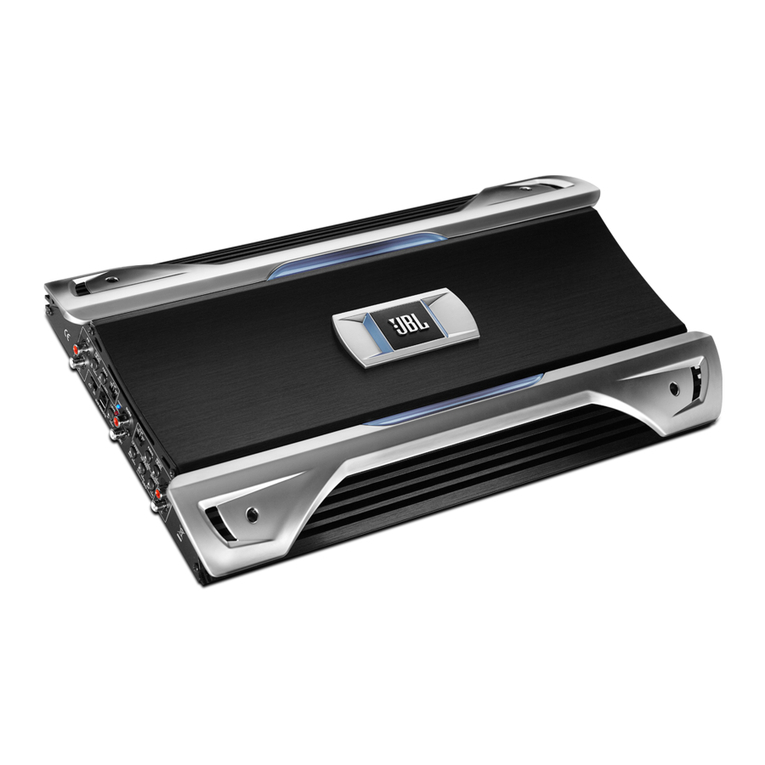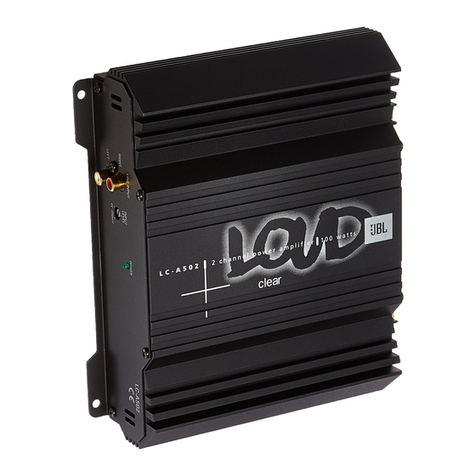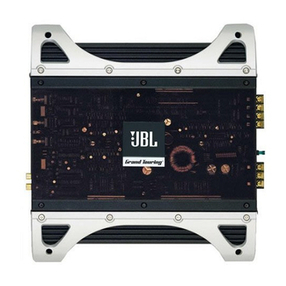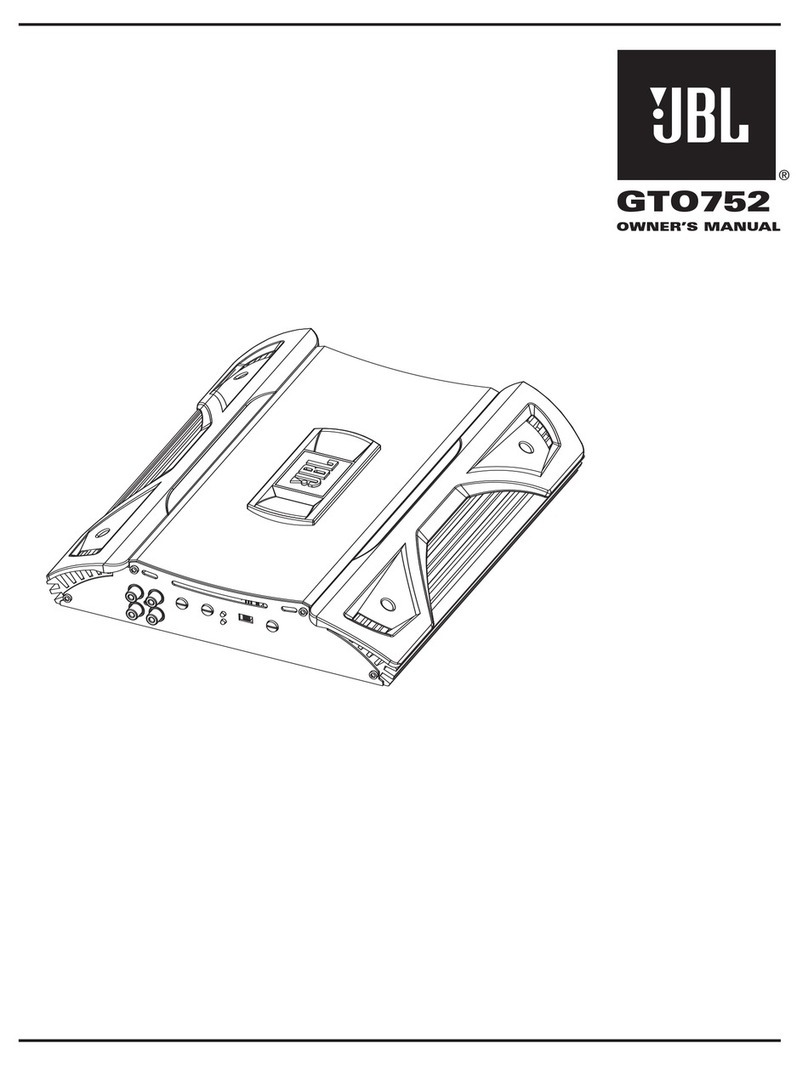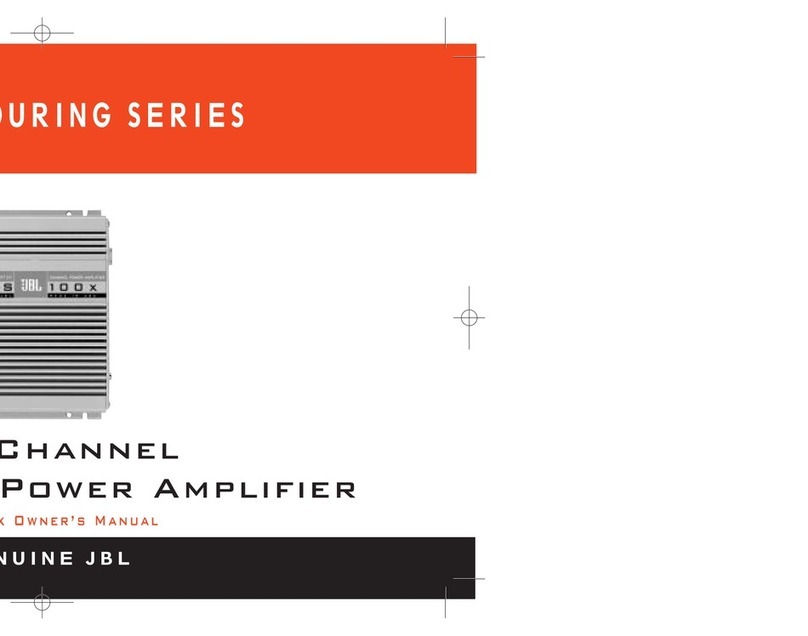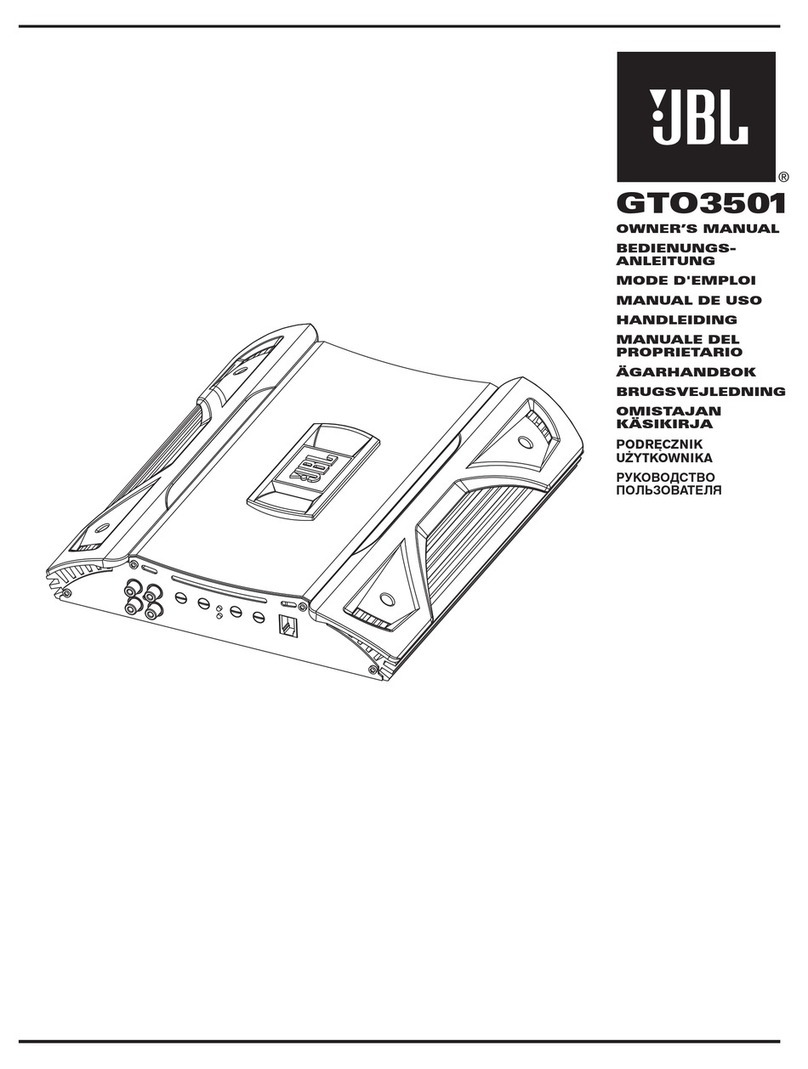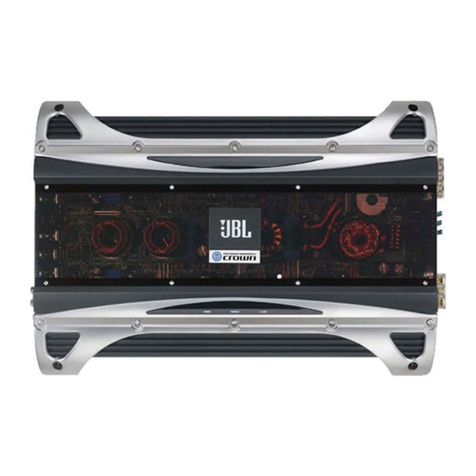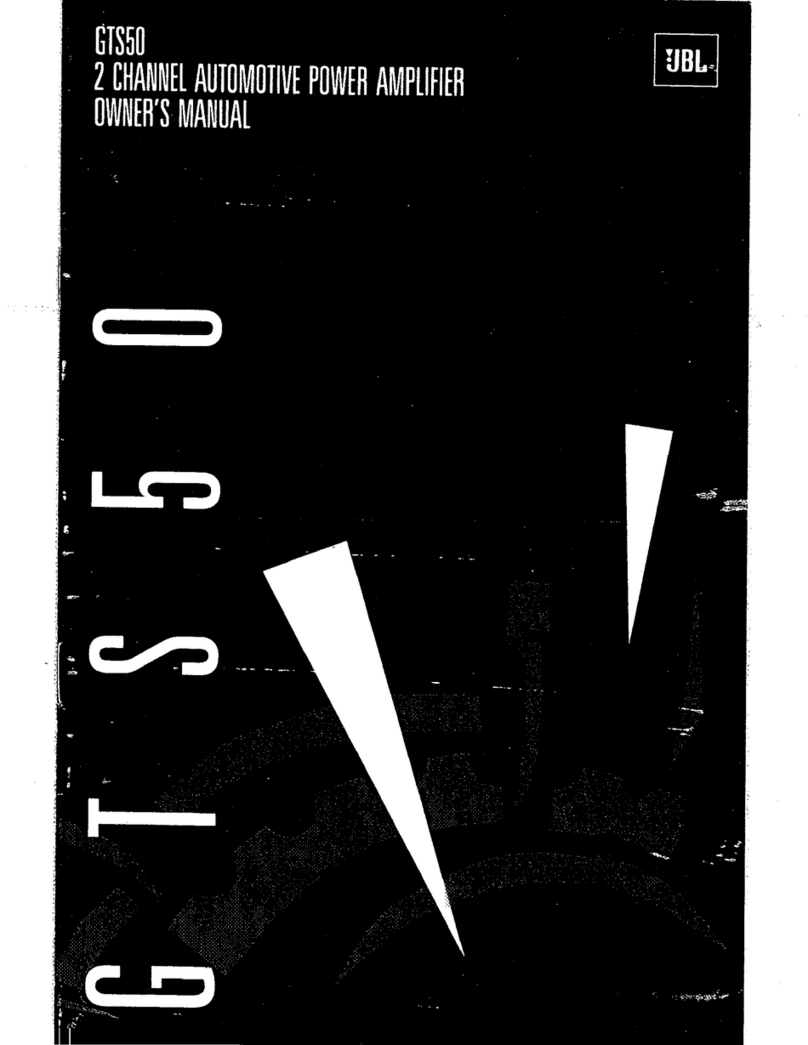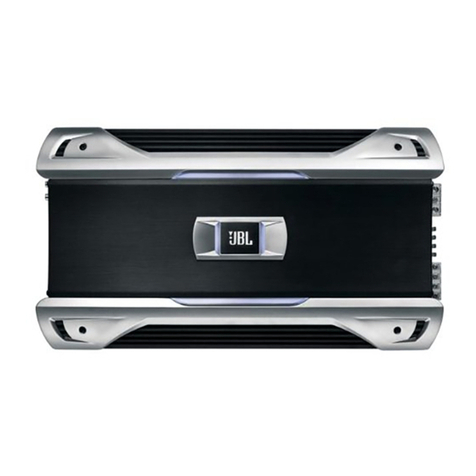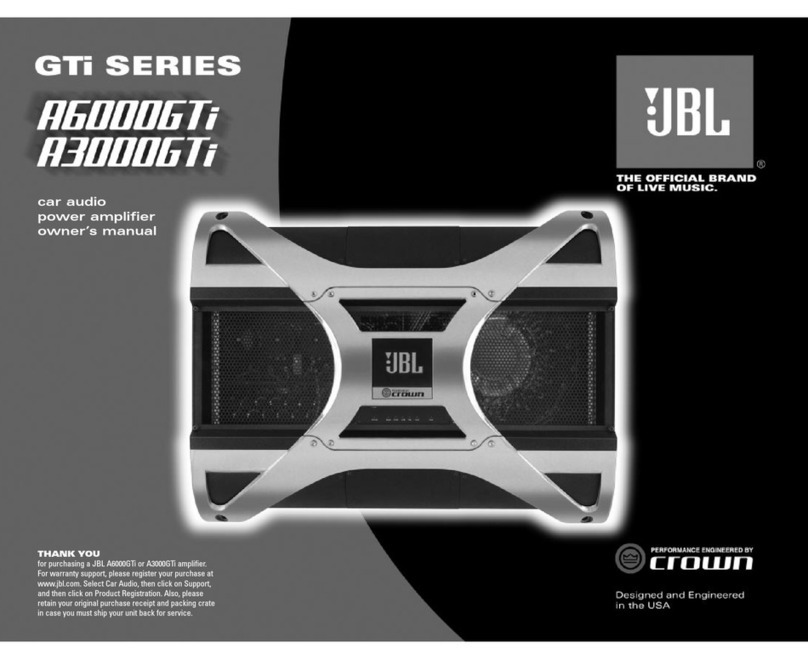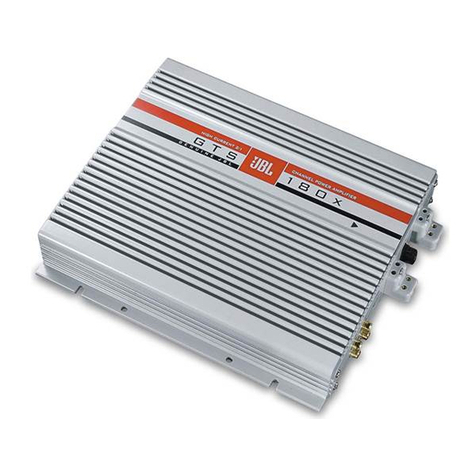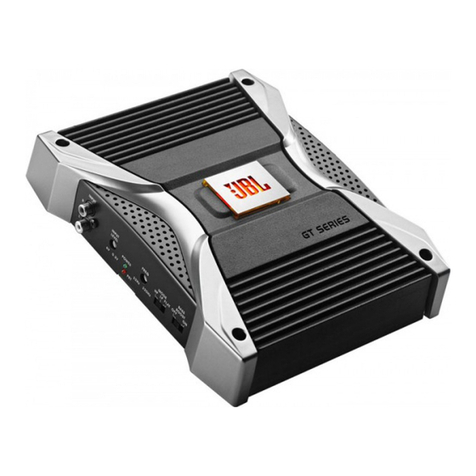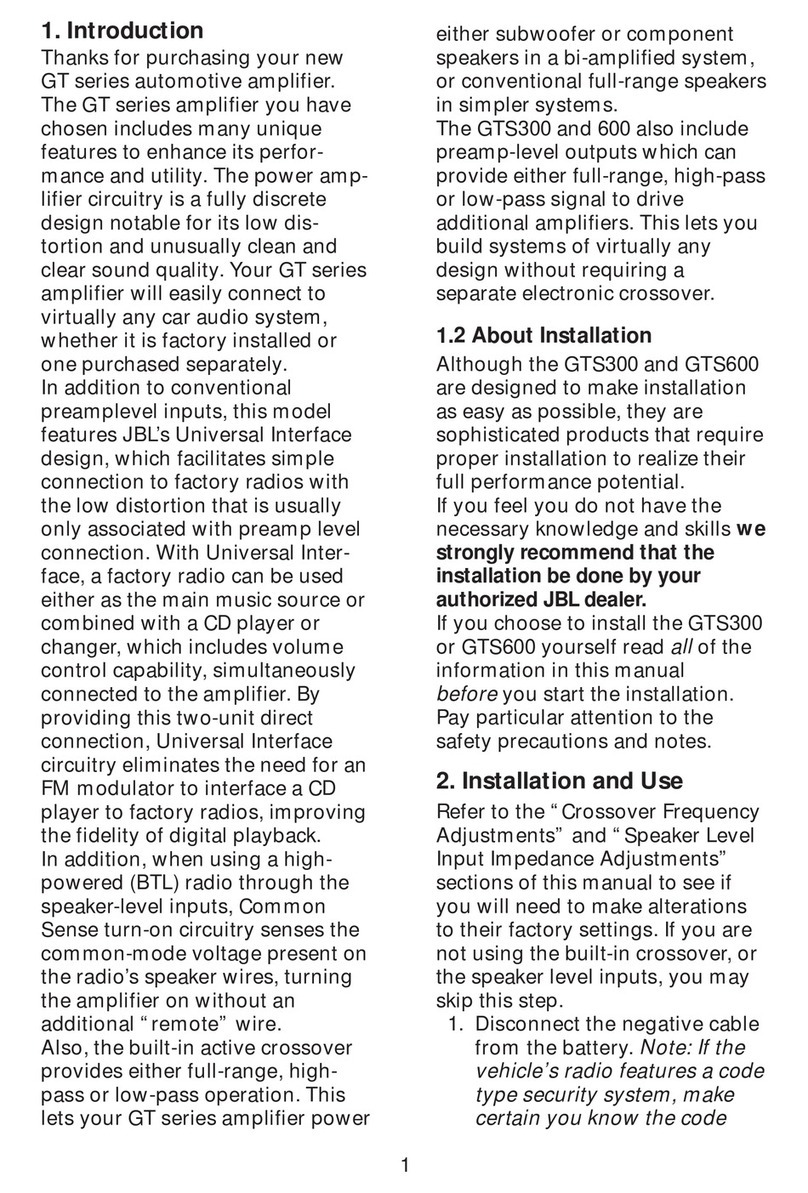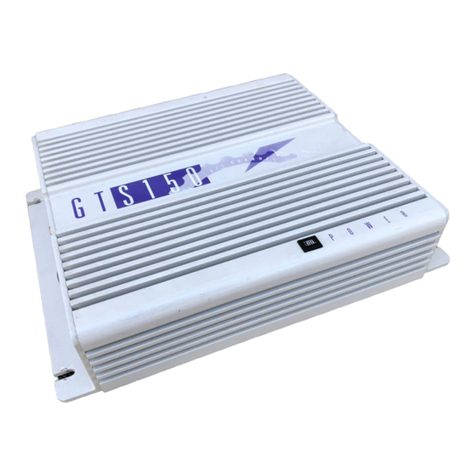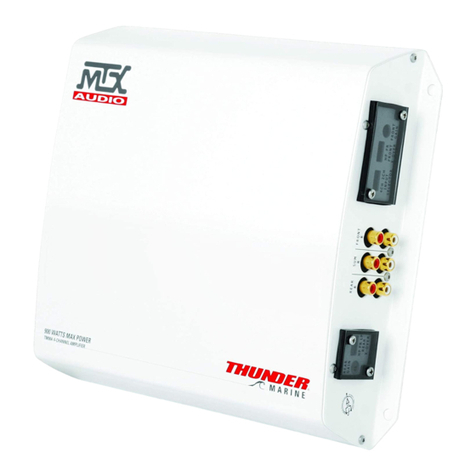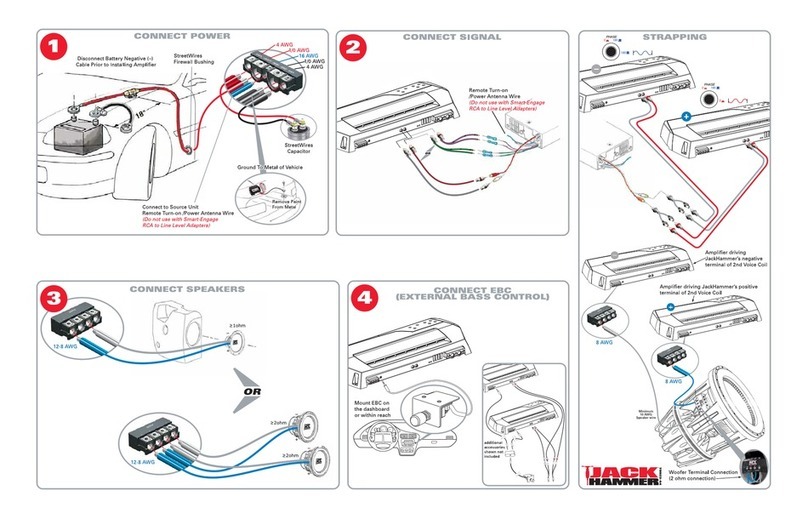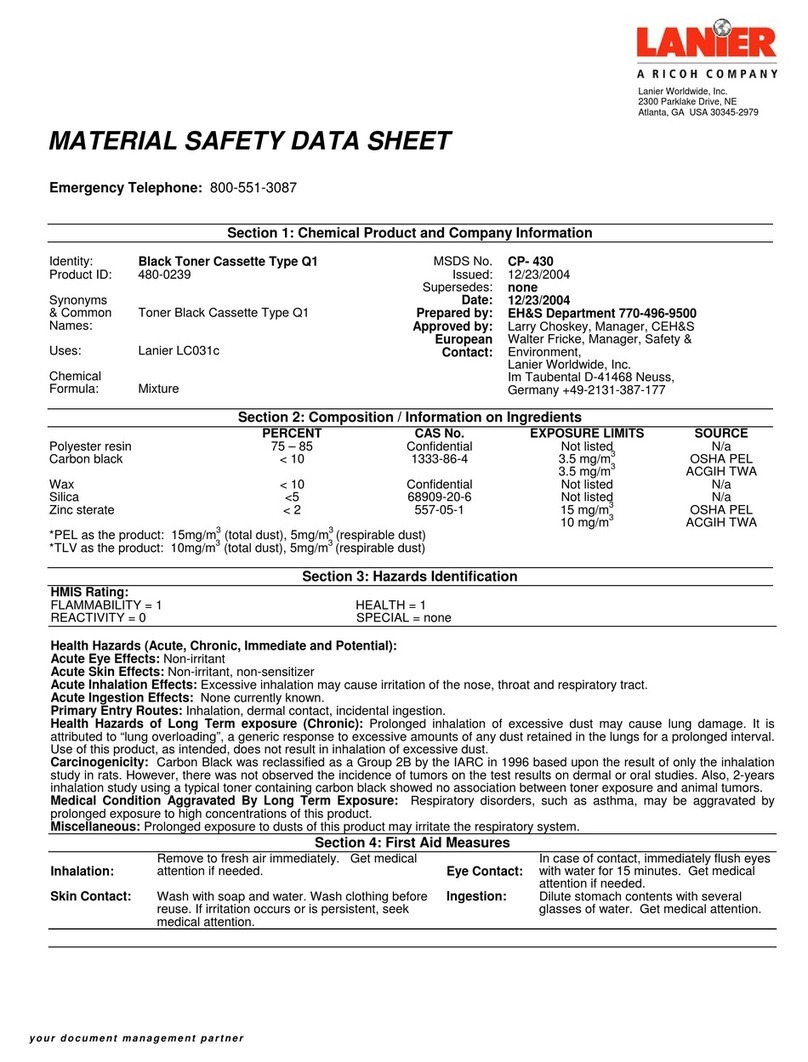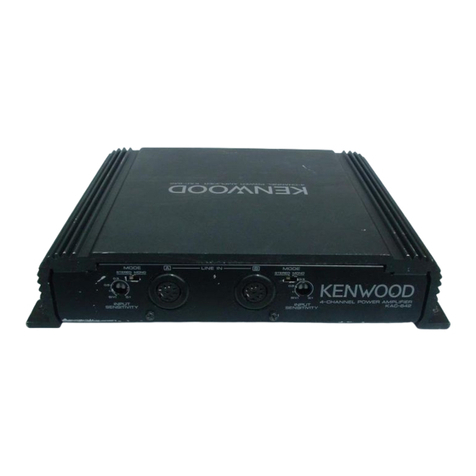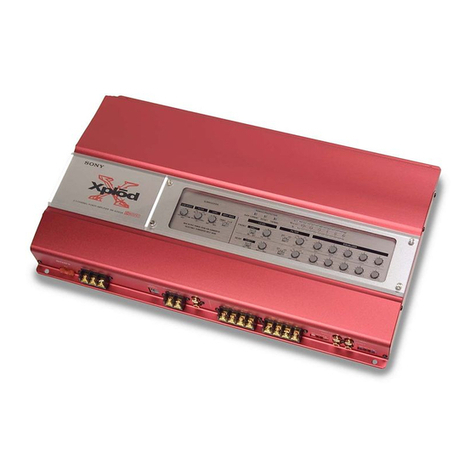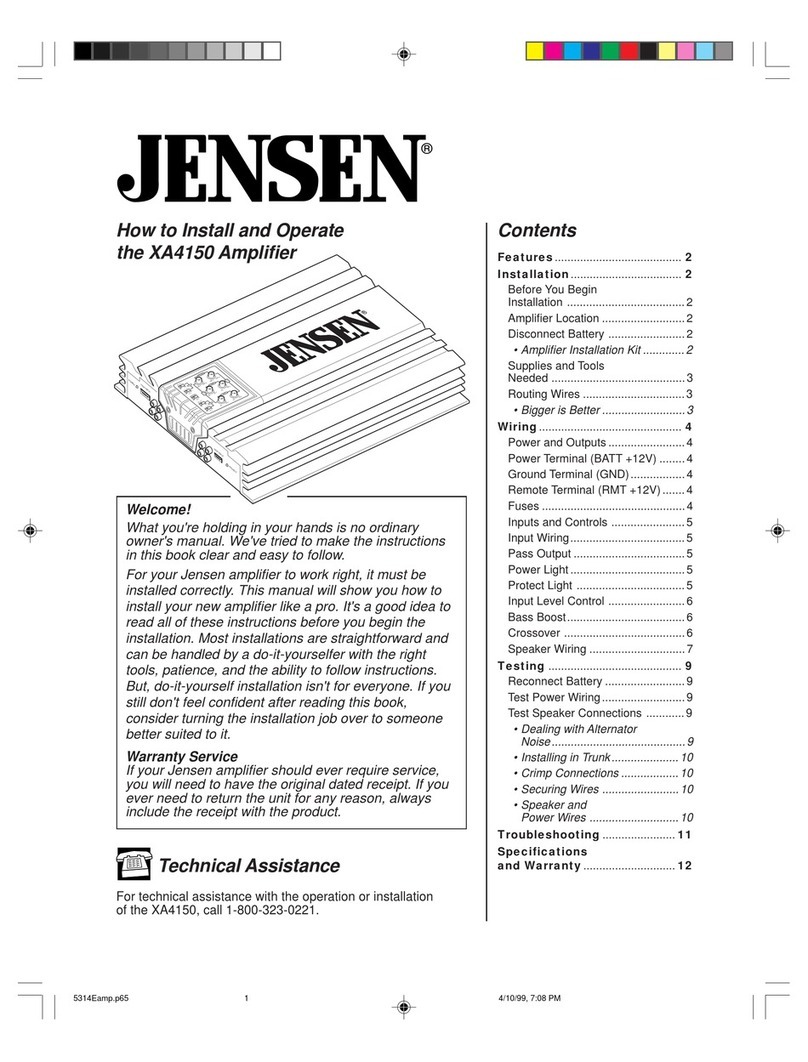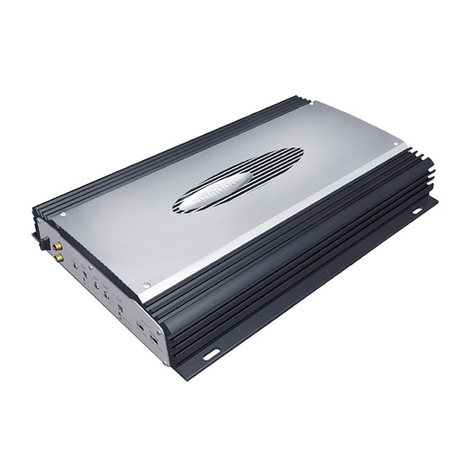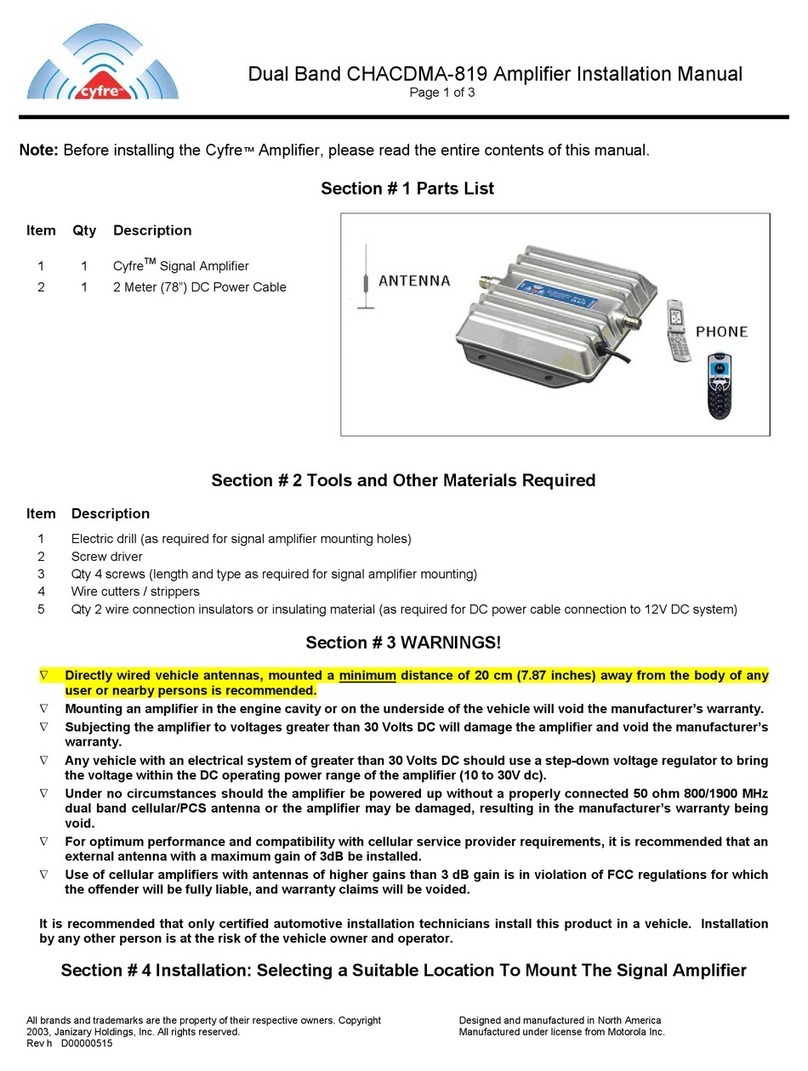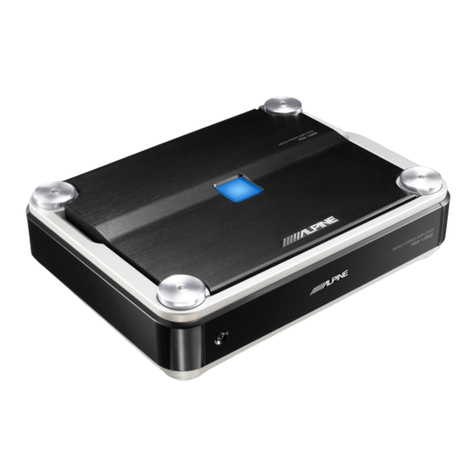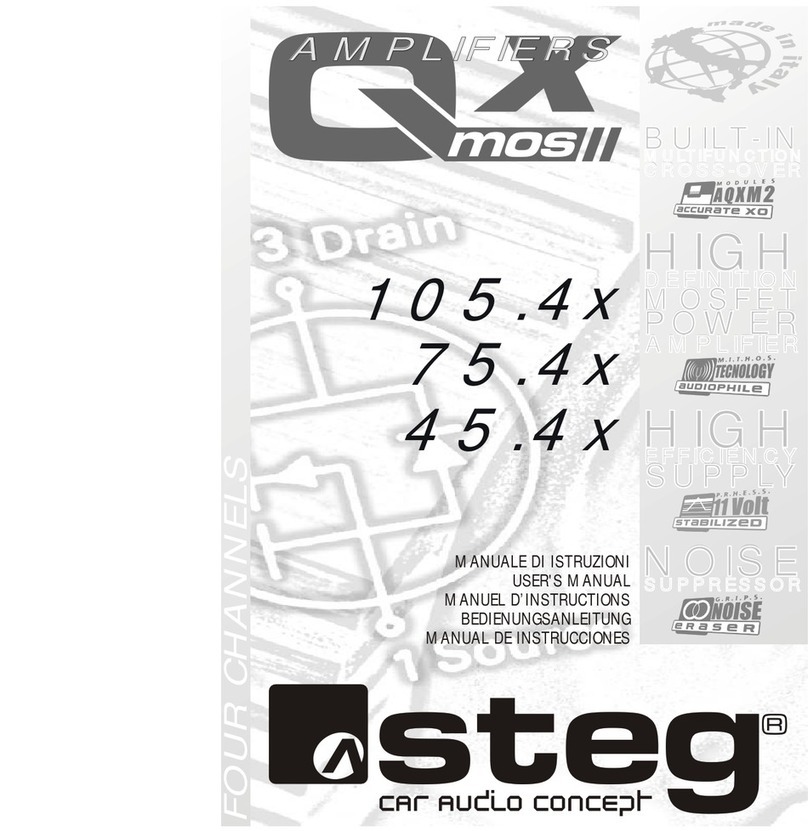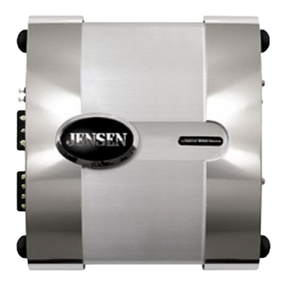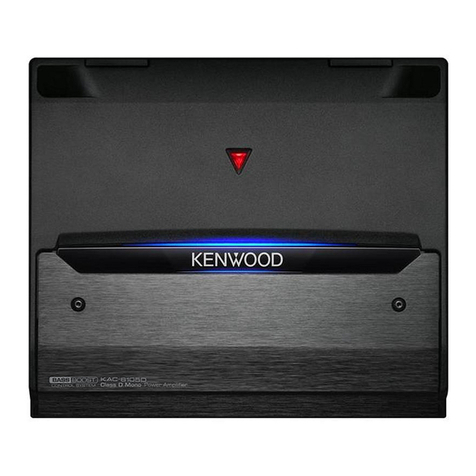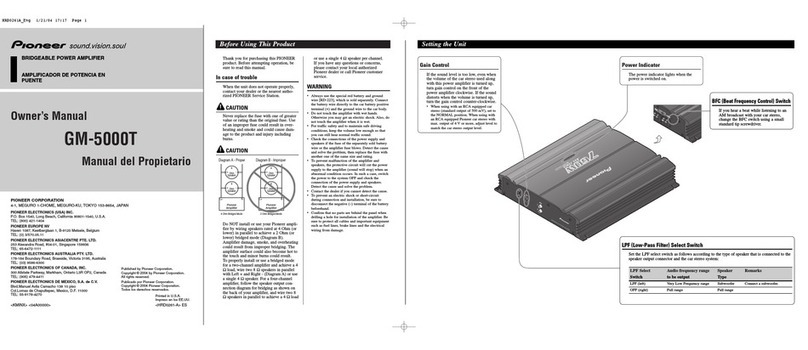5
2. Installation and use
Refer to the “Crossover Frequency
Adjustments” and “Speaker-Level Input
Impedance Adjustments” sections of
this manual to see if you will need to
make alterations to their factory
settings.
1. Disconnect the negative cable from
the battery. Note: If the vehicle’s
radio features a code type security
system, make certain you know
the code before disconnecting the
battery!
2. Run a minimum AWG #8 power
cable complete with a 60 amp fuse
(not included) directly from the
positive +12V battery terminal to
the desired amplifier location. Keep
the fuse within 6" of the battery
terminal, and position it before the
wire runs through any metal
partition.
3. Note: All wiring connections should
be made either by soldering with
heatshrink tubing insulation or with
high quality crimp-type insulated
connectors installed with a
professional-type, articulated
crimping tool. Soldering crimp-type
terminals is recommended for
additional
security. Never use wire nuts,
insulation-displacement connectors
(i.e. ScotchLok type), or twist and
tape connections. Do not use
electrical tape; it will loosen with
age and extreme temperatures.
4. Mount amplifier in the desired
location using the included screws.
5. Connect power wiring as shown in
the Wiring Diagram on page 18.
6. Connect the outputs from the head
unit to the appropriate inputs of the
amplifier according to the Wiring
Diagram (page 18) with either (or
both) high quality low-level signal
cables with RCA plugs, or the
supplied speaker-level input
connector.
7. Install the remote control in the
desired location. Connect and run
the cable from the remote to the
amplifier.
8. Connect the speakers to the ampli-
fier according to the Wiring Diagram
on page 18.
9. Turn the gain controls to the
1/4-position for all groups.
10. Set the bass boost of each group to
the desired position.
11. Set the crossover switches for each
group as desired.
12. Set the Group 2 Input and Group 3
Input as desired.
13. Set the mode switches to Stereo,
Left + Right, or Left Input Only
operation for each group.
14. Double-check your switch settings.
Reconnect the negative battery
cable. Note: Incorrect switch
settings can damage your speakers!
15. Turn on the signal source at a low
volume level, and check for the
correct output from each speaker.
16. Adjust the amplifier gain controls
using the procedure described in
the “Adjusting the Gain” section
(page 25).
17. Read the rest of the manual to get
maximum use and enjoyment from
your amplifier.
GTH400-20107 06/03/98 15:49 Side 5
